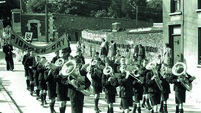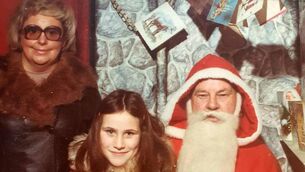Throwback Thursday: The Cork girl who did go to school through fields
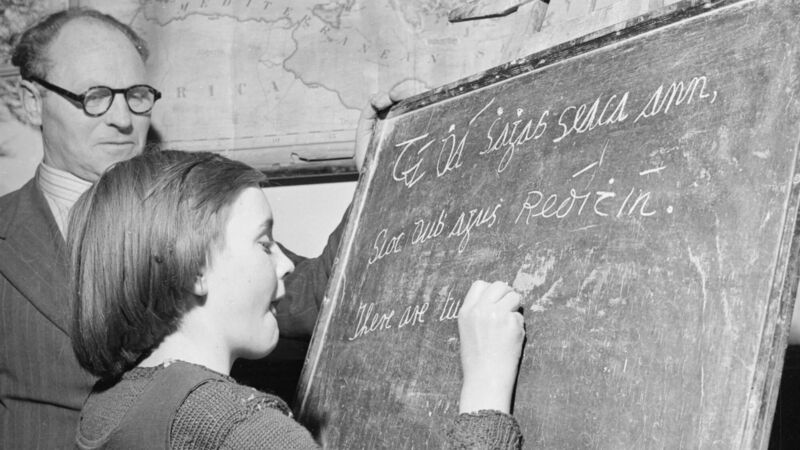
A schoolgirl translating English into Irish on a blackboard under the close supervision of her teacher around 1955. Picture: George Pickow/Three Lions/Getty Images
I thought you might welcome a reminder that Beneath Our Feet, an art and archaeology exhibition interpreting our city’s medieval past, which opened last Friday on Culture Night, at St Peter’s in North Main Street, actually continues until October 8.
This will give everyone a chance to see some of the fascinating history of our oldest street in times gone by.
The exhibition was inspired by an excavation at 92-96 North Main Street in the winter of 2021-22, just five doors from St Peter’s, and was curated by the artist and archaeologist John Sunderland who worked on that dig for six months with its project director, Avril Purcell.
And they found wonderful things to stimulate the imagination. Wattle and timber remains of old buildings, scraps of leather from shoemaking, and a myriad of other artefacts which could all tell their own stories of medieval Cork.
Get down to see it, do, before October 8, and tell us what you thought of it.
Being our oldest thoroughfare, North (and South) Main Street has always been rich in memories of earlier centuries.
There have been several earlier and very productive excavations along its length, and so much more remains to be discovered whenever an opportunity offers.
Shopkeepers have told of discovering hidden wells in their backyards, a book has been written about those many narrow laneways, their evocative names (Cockpit Lane?) and their stories, and the street still retains those almost visible and audible echoes of the past.
Of course, you don’t actually have to go digging for such gold. You can simply walk anywhere, remembering (as that great local historian Pat Kelly always tells us) to look up as well as down and sideways.
The names of streets, the curious angle of a corner, the faded lettering high up on an old building – everything has its own story to tell, and it’s up to you to see and interpret it.
Now, do you remember Bob Roche, who organised that great reunion of woodwork teachers from 1972 at the College of Comm’ that we reported on in Throwback Thursday last week? He stayed in the Clayton Hotel during the event, and looking down from his window in the morning brought a great deal of memories to his mind.
“The Clayton of course did not exist all those years ago and my memories of the area are of dock warehousing and such like,” said Bob.
“I even remember seeing the train from Kent Station travelling slowly along the road and then over both Brian Boru and Clontarf bridges, on its way to the Albert docks. It moved slowly, with a great clanging of bells, to remind people and cars to get out of the way.
“I also remember when both of these bridges could lift to allow boats to come upriver. You couldn’t believe that they were strong enough to bear such a heavy engine and carriages crossing several times a day, and yet be able to lift to let ships move to their moorings further upstream.
“The area nowadays has the look of a modern, vibrant business city.”
Yes, Bob, that whole area has changed so much. There are old engravings of an earlier riverside, with the tall masts of sailing ships crowded together up as far as the old Opera House.
Coastal steamers too would come well upriver to unload their goods from seaports along the shoreline of either East or West Cork, and reload with eagerly-awaited supplies to go back down to merchants in those smaller harbours.
And of course the great old Innisfallen still docked in the city then, just down from those lifting bridges. It was thus very much part of the city that boat, and regarded with intense affection by everyone.
Frank Roche has written most helpfully to identify the location for that picture of the Innisfallen supplied by Leo McMahon and published here on September 4.
If you recall, we asked if anyone could place where it was, as it certainly wasn’t Cork.
“The Innisfallen appears to be berthed at the southern end of Prince’s Dock in Liverpool,” said Leo.
“The spire of the Church of Our Lady & St Nicholas (C of E Parish Church of Liverpool) can be seen just behind the mast. The spire was an important navigational aid to shipping in the days when Liverpool had few tall buildings. The Royal Liver building would be out of shot to the right – about 150m away.”
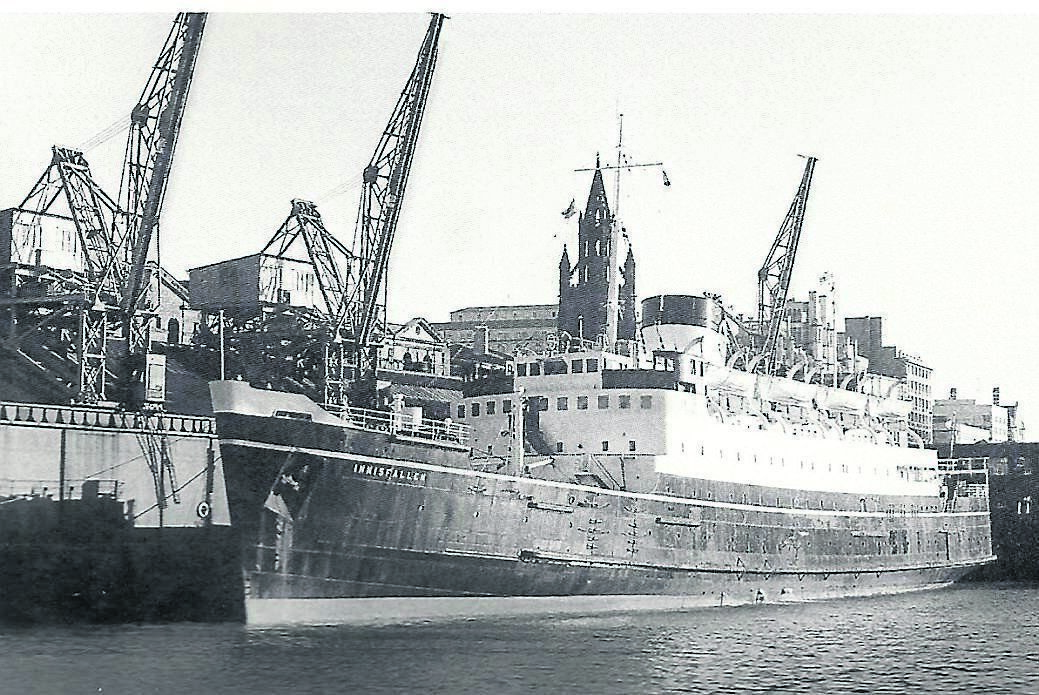
Leo continued: “Innisfallen is in her post-1953 black and white colours – at which time she was working the Cork-Fishguard route – so the photo was probably taken on an occasion when she was doing relief for one of the Dublin ships during their inspection/overhaul absences.
“At Liverpool, mixed passenger/cargo ships such as Innisfallen would often disembark the passengers at a landing-stage before moving into a dock to unload the cargo.”
Well, aren’t you great, Frank! Isn’t there always a Throwback Thursday reader out there who knows the answer? Keep it up, Frank, and the rest of you too – if you can solve a conundrum posed on these pages, don’t hang back – let us know!
Now, there was a wonderful reaction to our discussion of schooldays of yesteryear, and particularly Alice Taylor’s memorable book, To School Through The Fields.
Micheál Kenefick responded with a particularly heart-warming story of his wife’s schoolgoing days in East Cork.
“Greetings, Jo. While I only had to go down Ellie’s path from the thatched house in the Middle Road to get to the school, and later, when we we moved to the village in Whitegate, I just had to go around the corner to get there, my wife Helen (nee O’Neill) had, in her childhood, genuinely to go through the fields to get to Ballytibbet National School.
“She would cross the road from the cottage, climb the gate with her brothers, Pat and Tony, and walk through three fields before exiting over a stile on to the Narrow Road and then down through Ballinrostig village and onwards to the school in hail, rain or shine. Mostly the first two as it would be holiday time when there was a bit of fine weather.
“When Pat and Tony had moved on to secondary school, she was entrusted to escort a neighbour’s child who was just starting. The child in question didn’t have a great love for it initially, and would regularly make a bolt for home; and, if the full truth is being told, was usually too quick for Helen.
“The family of the young lad happened to have a car, and as it would be too late to start the trek again, they would get a lift to the school gate. What a treat more than 60 years ago!”
Micheál added: “The school around the corner was accidentally burned to the ground in 1968 and is still in ruins. Ballytibbet closed around 1965/66 and was amalgamated with Aghada. It is now a private dwelling.”
Oh Micheál, what a lovely anecdote! Can’t you all just see that little rogue making a break for it and sprinting for the safety of home? And Helen’s delight at getting a luxury lift in a car to the school, at a time when every kid was expected to get there on foot. Thank-you for that, Helen.
And we mentioned Duchas.ie and the Schools Collection recently too, which prompted Tim Morley to do some research of his own.
“Hallo Jo. Your reference to this wonderful collection now being online gave me the incentive to dig into the life of my grandparents (1890-1950).
“Imagine the shock for me to find the name of my grandfather there, now dead 70 years, and a long story of his about Finn McCool and the adventures of the Fianna.
“A full seven foolscap pages written in Irish, and he a simple farmer, left school at 14, and who seemed to us to be only conversant in English.”
Spurred by this discovery, Tim Morley dug further into his family history.
“Our researches seem to suggest that in the middle of the 19th century, like a lot of other unlucky people, my grandfather would have been evicted, from the Coolea area (west of Macroom), with family and extended family (old aunts?) and had to find an alternative to survive.
“In their case, this was on the western slopes of Mushera mountain, not exactly an El Dorado.
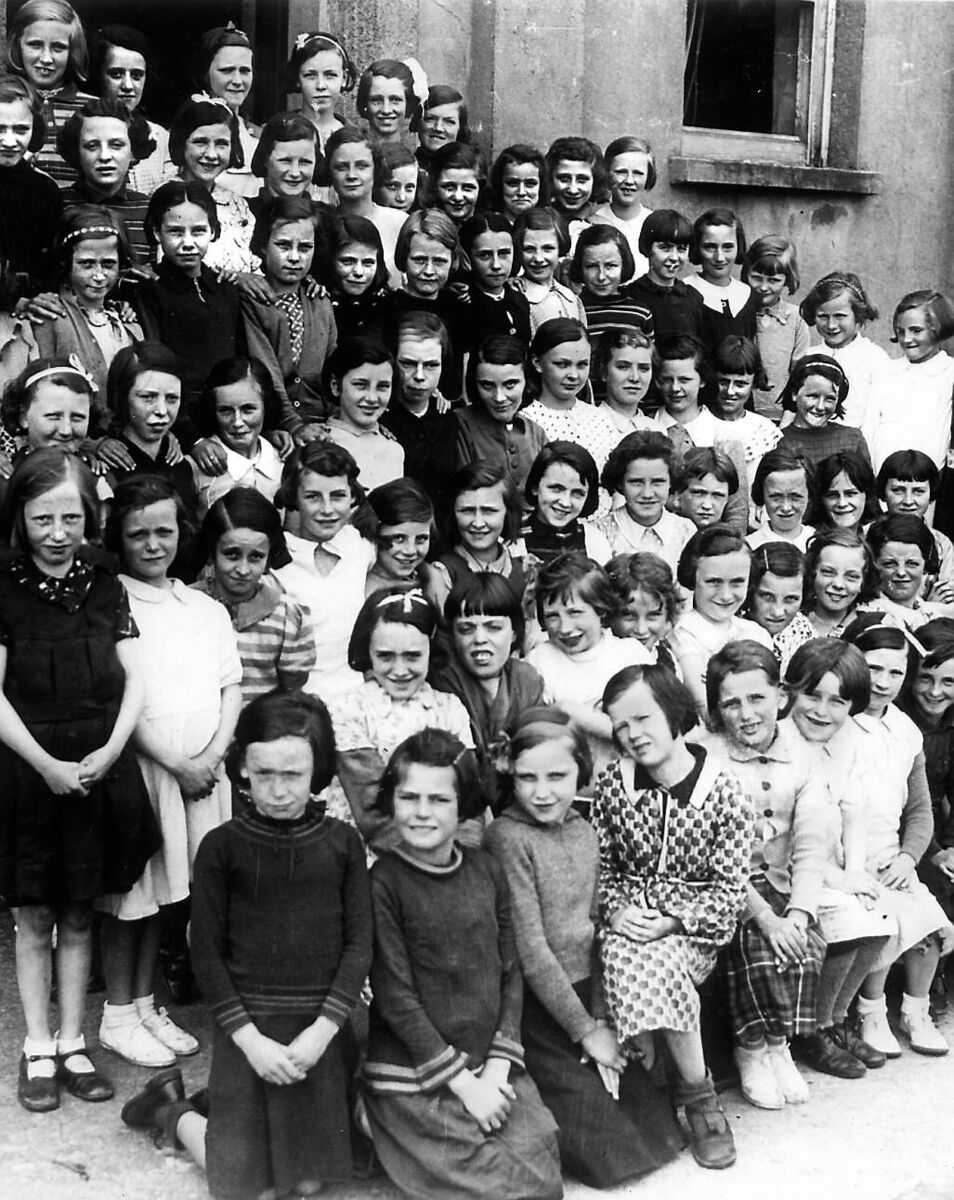
“The mother would be involved in housework, while bringing up the children was left to the older people who were no longer able to be physically active.
“Since these people came from a Gaeltacht area, they spoke only Irish, and thus gave my grandfather his mother tongue. English, it seems, he learned at school, and when we knew him in later years, this language seemed for him normal (being spoken perfectly).”
Tim added of his grandfather: “It seems he was cleverer than I, still not speaking perfect German where I have been living for the past 50 years!
“Of his late 19th century family of ten, five stayed in Ireland (only two getting married), while five went to the USA.
“My grandfather married into a small farm on the eastern side of Mushera (not a land flowing with milk and honey either) where with four daughters a man was badly needed to run the place.
“He ran that farm, always more than enough to do, tilling the fields, growing and cutting hay and oats, cows needed to provide milk which had to be carried daily with horse and cart to the creamery, and of course the ‘praties’ to be grown and dug up.
“The hardest work of all (I think) was cutting and drying the turf. He certainly didn’t need to go to a gym, and still lived to be 90!”
Tom continued: “My grandmother ran the house, getting up early to put on the fire, boil the water make the tea.
“The children were sent to school (three miles to Ballinagree, or four miles to Rylane, and they went barefoot).
“After that, there were the cows to be milked, calves and chickens to be fed, eggs to be gathered, dinner to be boiled (mainly potatoes with some butter).
“In my (later) time, when visiting, there would have been the luxury of a cup of tea after the dinner. My grandmother would also have the pleasure of drawing water daily from the well: two buckets that was, and a walk of about 400 yards.
“And don’t forget the baking of the bastable bread. Probably a few other jobs as well, the bookkeeping was also necessary, money had to come from somewhere.
“The day finished up with the saying of the rosary (20 minutes?).
“Yet three of their seven children were sent off to higher education, and expected to make their contribution later to keep the show on the road.
“More than anybody, the later generations (mine, after the 1950s), profited from these foundations until the cavalry in the form of the Common Market rode over the hill to drive out this history of poverty.”
Whew, what a cracking bit of research, Tim! You have really made your grandparents’ story come vividly alive, which should always be the aim. Well done you!
Now come on the rest of you, let’s hear something similar of how your grandparents lived. Don’t know? Well go and look it up.
There is no excuse these days with the internet there on hand at the click of a button. Email jokerrigan1@gmail.com or post on our Facebook page: www.facebook.com/echolivecork.


